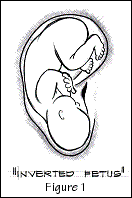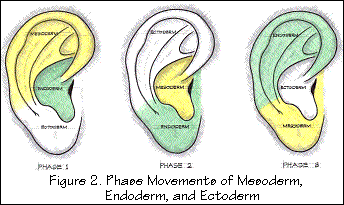|
|
|
|
|
|
|
| |
© 1998-2025
Integrated Medicine Seminars, LLC
PO Box 851952
Yukon, OK 73085-1952
405-623-7667 |
|
|
Shen Men
A Critical Assessment through
Advanced Auricular Therapy
by Bryan L. Frank MD and Nader Soliman, MD
|
Abstract: Shen Men, or the
Chinese "heavenly gate" point on the ear, is situated at the apex
of the triangular fossa. It is one of the most recognized auricular
points and is used in the treatment of most ailments. Shen Men is
known to have a powerful influence in treating various conditions,
including pain, sedation, addiction treatment, and inflammation. While
Shen Men is universally recognized in the auricular acupuncture world,
it is not associated with any specific organ, as the Chinese auricular
points were derived from observation of functional effects, and not
necessarily with respect to organs and anatomy. The Nogier French
auricular system, however, was developed with anatomic and embryological
consistency to localizations of the points or zones. Through understanding
the anatomic and embryological characteristics of an auricular zone,
the physician will more completely understand the patient's pathophysiology
and generally experience more enduring clinical results in treatment
of these auricular zones.
Key Words: acupuncture, auricular
acupuncture, auricular therapy, auricular medicine, Zero Point, Paul
Nogier
|
| Introduction: Auricular acupuncture
was developed as a formal sotamotopic system through the discoveries
of Dr. Paul Nogier, of France.1,2,3 With the initial recognition in
1951 that the "sciatic point" in fact correlated with the
4th lumbar vertebra rather than sciatica as an ailment, Dr. Nogier
discovered the primary correspondence of the body on the auricle in
an "inverted fetus" presentation.4,5,6 This observation
led to the eventual identification of the body's anatomic or structural
correspondence with zones in the auricle. The Chinese
learned of Dr. Nogier's work through a German medical acupuncture
article that arrived in China via Japan. The Chinese followed with
thousands of clinical observations and developed auricular mappings
which were similar to the early French system, though with some
differences noted. This correspondence system was easy to teach
"barefoot doctor" acupuncture technicians to readily assimilate
into their paramedical practices.
Developmental Perspectives:

Dr. Nogier's original discovery led to the identification of the body
mapping on the auricle which presented remarkable consistency with
respect to anatomic and embryological considerations. Thus, the "inverted
fetus" presents with the musculoskeletal (mesodermal) projections
in the upper aspect of the ear including the antihelix, scaphoid fossa,
and triangular fossa.1,5,7,8 Visceral (endodermal) organs present
in the concha, and the head's (ectodermal) structures are located
in the lobule in the earliest somatotopic mappings.9
Dr. Nogier eventually recognized that various organs'
pain and dysfunction would present in different auricular zones,
depending on the stage of the ailment. Phase 1 auricular zones correlate
to normal physiology or acute pathology and is the presentation
of the original "inverted fetus".(See figure 1) Phase
2 corresponds to degenerative conditions, and the "inverted
fetus" is then transformed into an upright position. Phase
3 corresponds to subacute and chronic conditions, and the homunculus
is in the transverse presentation with the head in the central auricle
or concha. The location of a particular organ or anatomic structure's
point will thus be identified in one or more locations depending
on the stage of the disease process.3
The respective embryological tissues will shift in their auricular
representation based on their Phase status. For example, the mesodermal
structures occupy the upper ear in Phase 1, followed by the concha
in Phase 2, then the lobule in Phase 3.(See figure 2)
While it is now known that illness progresses form Phase 1 to Phase
3 then to Phase 2, Phase 2 was discovered second and therefore was
labeled "2". Recovery progresses in a reverse fashion,
from Phase 3 to Phase 2 to Phase 1.1,3(See figure 3)
Because of the focus on functional observations, several organs
in the Chinese auricular system differ from the French system. Further,
the Chinese identified various points which had functional or metaphorical
names, rather than anatomic descriptions. One notable example of
this disparity is the placement of the organ heart. Commonly placed
between the lungs on the Chinese charts, this placement does not
conform to anatomic and embryological considerations. The French
charts will place the Phase 1 heart on the antihelix along the region
which corresponds to the upper thoracic vertebrae.(See figure 4)
This placement respects the nature of the heart as a mesodermal
organ in its location for normal physiology or acute pathology.
It is not surprising that the Chinese functional observations place
the heart in the inferior concha, as that is the region for Phase
2 mesodermal structures. Patients with functional heart disease
are likely to present with coronary arteriosclerosis, a degenerative
condition of the coronary vessels, and thus in a Phase 2 state.
Given that there may be clinical or sub-clinical manifestations
as well, an active auricular point will likely be identified along
the antihelix Phase 1 heart zone, as well. Phase 3 subacute or chronic
heart conditions may be found in the lobule; any condition may present
in one or more Phase locations.

Another example of the disparity of French and Chinese points is that
of degenerative arthritis of the knee. In Phase 1, the knee is represented
in the middle of the triangular fossa. A Phase 2 degenerative knee
is represented in the inferior concha, while that of the chronic Phase
3 knee is in the lobule.10 It is important, therefore, to understand
that the zone near the Chinese heart point may in fact have no correlation
to a heart ailment; rather it may represent a degenerative knee condition!
Clearly the diagnostic and treatment implications are critical to
correct understanding of these different presentations.
It is this understanding of advanced auricular acupuncture which the
Chinese system, developed through a functional correlation, has never
integrated into their mappings on the ear. There is no consideration
of the different phases based on stage of illness, nor is there strict
conformity to point correlation based on anatomy and embryology. Often
the physician's confusion regarding the presence of an active auricular
point will become clear when the multi-phase anatomic evaluation is
considered.
Shen Men:
The Chinese Shen Men point has been recognized for its application
in many pain and dysfunctional conditions. With pain conditions, Shen
Men is often considered to be a primary point for treatment. Neuropsychoemotionally,
it is considered to alleviate apprehension, fear, anxiety, and to
help regulate the sympathetic nervous system. Shen Men is regularly
employed in addiction treatments.11 It is also recognized for its
role in the treatment of inflammation. The presence of an electrically
active or tender Shen Men is regarded by the Chinese auricular acupuncturist
as an indication of neurasthenia or the presence of pain.12
As it became common for practitioners to look for Shen Men and to
treat it for many conditions indiscriminately, it is important for
us, as physicians, to know what the Shen Men point really represents.
Shen Men is not a mystical, mysterious point as the impression on
Chinese ear acupuncture charts give us. The Chinese acupuncturists
have noticed the presence of a point here that is usually active in
painful conditions, in many inflammatory conditions, and in cases
of addiction. As a result, the name Shen Men was assigned for its
functional qualities of electrical activity and clinical efficacy
in numerous conditions.
As Shen Men is a functional designation, the nature of the point and
its representation of body organs and systems is not recognized. An
anatomic and phase understanding will give us a clear understanding
to the nature of Shen Men. In Phase 1, the Shen Men area corresponds
to the Spleen zone. This mesodermal organ will functionally deal with
inflammatory cellular elements and thus this zone is often seen in
acute ailments. In Phase 2, the Shen Men zone corresponds to the representation
of the ectodermal thalamus. As a significant central nervous system
structure, it is not surprising that this zone would be seen in chronic
degenerative and painful conditions and in patients suffering from
chronic addictions.
Finally, the Shen Men zone corresponds to the Phase 3 liver. Again,
given the extensive interactions of hepatobiliary physiology, it is
not surprising that subactue or chronic ailments would be identified
in this zone.
Conclusion:
The significance of Shen Men may be more specifically recognized when
the physician understands the anatomic and embryological implications,
rather than simply the functional importance of this zone.5,10 Additionally,
this advanced auricular acupuncture approach will lead to clearer
diagnostic interpretation of a presenting illness as it is represented
in one or more areas on the auricle. Ultimately, more enduring clinical
effects may be realized with treatment of properly identified points.
Proper identification and treatment of auricular points is encouraged
for the physician to treat the patients' auricle in a true medical
model rather than in a cursory technical approach.
References:
1. Bourdiol, R. Elements of Auriculotherapy. Maisonneuve:
Sainte-Ruffine, FR, 1982.
2. Huang, H (Translator). Ear Acupuncture: A Chinese Medical Report.
Rodale Press, Inc., Emmaus,PA, 1974.
3. Nogier, PFM. From Auriculotherapy to Auricular Medicine. Maisonneuve:
Sainte-Ruffine, FR, 1983.
4. Kropej, H. The Fundamentals of Ear Acupuncture. Karl F. Haug Publishers:
Heidelberg, 1987.
5. Nogier, PFM. Handbook to Auriculotherapy. Maisonneuve: Sainte-Ruffine,
FR, 1969.
6. Nogier, PFM and Nogier, R. The Man in the Ear. Maisonneuve: Sainte-Ruffine,
FR, 1985.
7. Helms, JM. Acupuncture Energetics: A Clinical Approach for Physicians.
Medical cupuncture Publishers: Berkeley, 1995.
8. Oleson, TD, Kroening, RJ, and Bresler, DE. An experimental evaluation
of auricle diagnosis: he somatotopic mapping of musculoskeletal pain
at ear acupuncture points. Pain, Vol. 8 No. 2, 1980;217-229.
9. Oleson, TD. Auriculotherapy Manual: Chinese and Western Systems
of Ear Acupuncture. 2nd Edition. Health Care Alternatives: Los Angeles,
1996.
10. Soliman, NE and Frank, BL. Atlas of Auricular Therapy and Auricular
Medicine. Integrated Medicine Publishers: Richardson, TX, 1999.
11. Wen, HL and Cheung, YC. Treatment of drug addiction by acupuncture
and electrical stimulation. Asian J. Med., 1973;9:138-141.
12. Wexu, M. The Ear: Gateway to Balancing the Body. A Modern Guide
to Ear Acupuncture. Aurora Press: Santa Fe, 1975.
Reprinted with permission from the American
Academy of Medical Acupuncture. This article originally appeared
in Medical Acupuncture, the journal of the American Academy of Medical
Acupuncture.
Images are reprinted from the Atlas
of Auricular Therapy and Auricular Medicine. |
|



